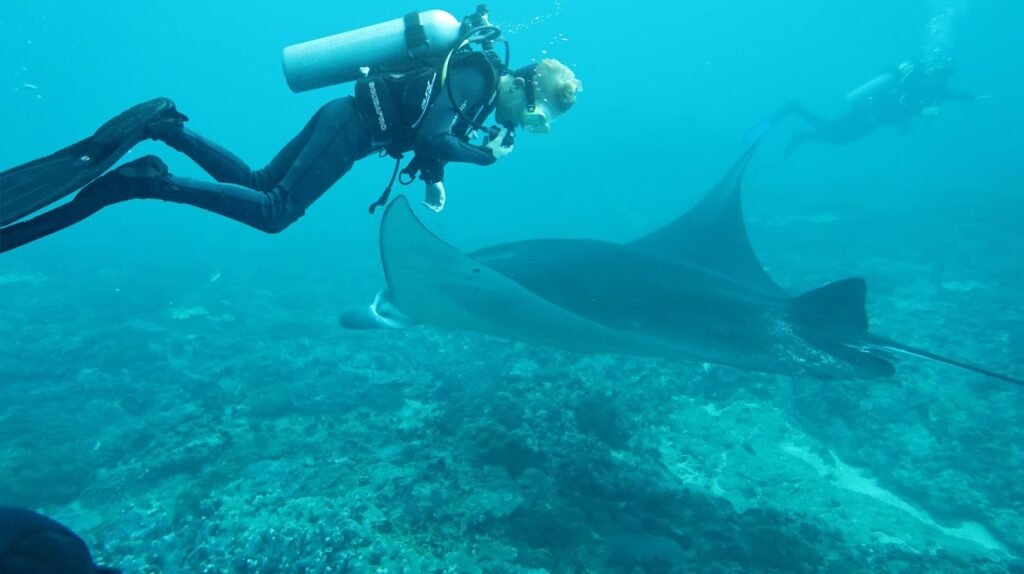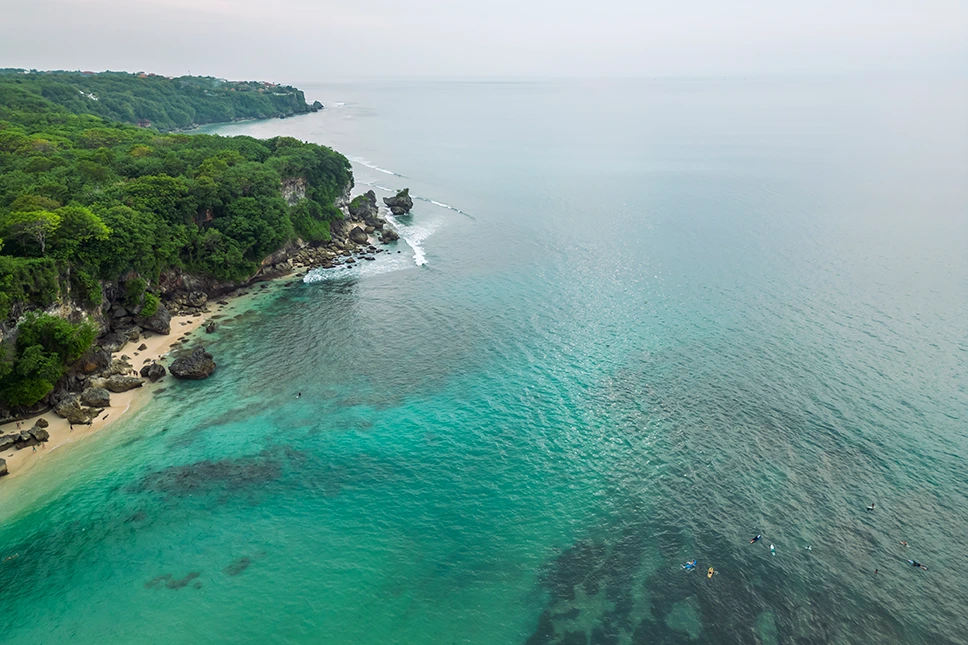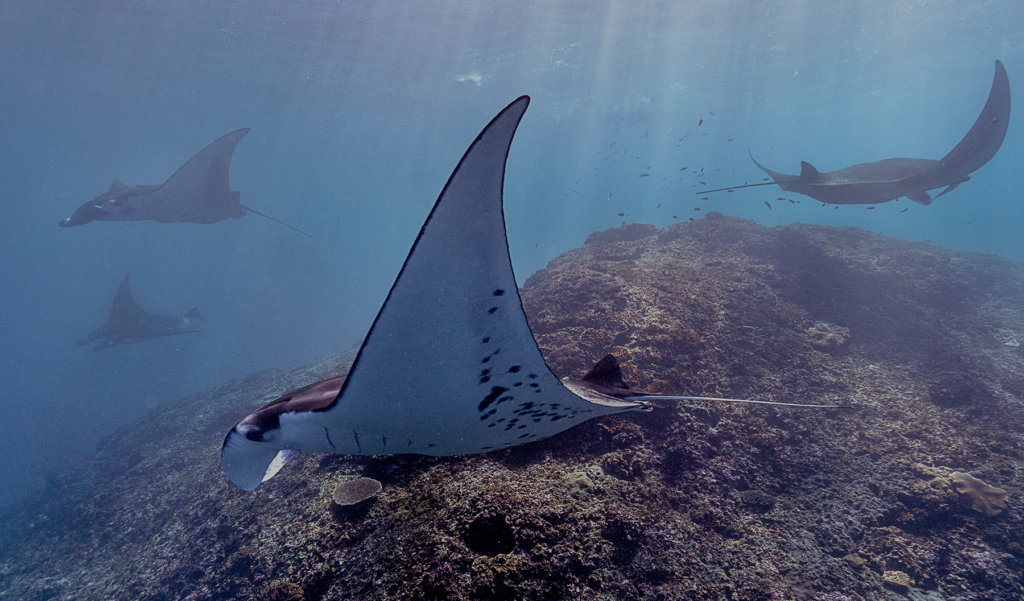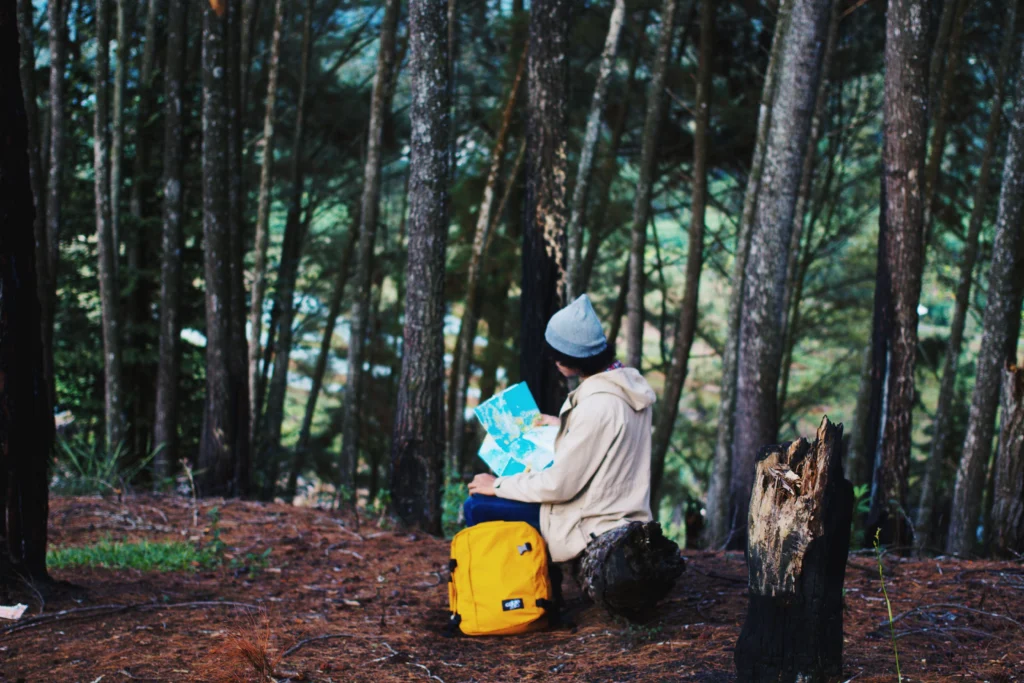- Key Takeaways
- Discovering Bali’s Underwater Treasures
- Diving for Beginners
- Bali’s Diverse Dive Regions
- Ideal Diving Seasons in Bali
- Scuba Certification in Bali
- Planning Your Dive Trip to Bali
- Practical Tips for Scuba Divers
- Notable Dive Sites and Courses
- Luxury to Budget-Friendly Stays for Divers
- Final Remarks
- Frequently Asked Questions
- What is the best time of year to go diving in Bali?
- Can beginners dive in Bali?
- Where can I find the most diverse dive sites in Bali?
- Do I need a certification to scuba dive in Bali?
- How should I plan my diving trip to Bali?
- Are there any specific tips for scuba divers traveling to Bali?
- What kind of accommodations are available for divers in Bali?
Did you know that Bali is home to over 3,500 species of marine life, scuba divers? This island isn’t just about serene beaches and vibrant nightlife; it’s an underwater paradise for scuba divers. Whether you’re a seasoned diver or beginner looking to plunge into new depths, the best diving in Bali offers a kaleidoscope of colors and creatures beneath its waves. From the sunken USS Liberty wreck at Tulamben to the silent drifts along Nusa Penida, where majestic manta rays glide by – every dive site here tells its own story. So grab your fins and mask as we dive into what makes Bali’s underwater world a bucket-list destination for scuba divers and ocean enthusiasts.
Key Takeaways
- Bali offers a rich tapestry of underwater treasures, making it an ideal destination for divers of all levels; from beginners to seasoned pros, there’s a dive spot for everyone.
- If you’re new to diving, Bali is a great place to start; with numerous beginner-friendly sites and a range of certification courses, you can safely dive into the experience.
- The island’s diverse regions, each with unique dive sites, cater to different preferences – whether you seek vibrant coral gardens, thrilling shipwrecks, or encounters with majestic marine life.
- Timing your visit is crucial; the best diving conditions in Bali are typically found during the dry season from April to September, offering better visibility and calmer waters.
- Scuba certification in Bali is not only accessible but also provides an internationally recognized credential, allowing you to dive in other global locations.
- Before embarking on your diving adventure, plan effectively by considering factors like accommodation options that range from luxury resorts to budget stays, all catering to divers’ needs.
Discovering Bali’s Underwater Treasures
Top Dive Locations
Bali boasts some of the most stunning dive sites in the world. The USAT Liberty wreck in Tulamben is a must-visit dive site. This sunken ship now hosts an array of marine life, making it a diver’s paradise.

Just off Bali’s northwest coast lies Menjangan Island. Its coral gardens are teeming with life and color, offering scuba divers breathtaking underwater landscapes to explore.
Nusa Penida island provides thrilling scuba diving drift dives due to its strong currents. Divers here can glide along vast coral walls while enjoying the rich biodiversity and exploring the island’s scuba diving sites.

Marine Life Highlights
Manta Point is like a magical underwater world where you can see these huge manta rays swimming gracefully all around you. It’s like being in a real-life aquarium, but way cooler because you’re right there with the fishies!
These manta rays are really big, like the size of a car, and they have these huge wings that flap as they glide through the water. It’s super cool to watch them move so gracefully. And guess what? You can even swim alongside them if you’re lucky! Just imagine being in the ocean and having these majestic creatures swimming beside you – it’s like a dream come true for any diver.

The best part about Manta Point is that the water is so clear, you can see everything around you. It’s like looking through a window into another world. The coral reefs are bursting with color, and there are so many different kinds of fish swimming around. It’s like a rainbow under the sea! And if you’re into taking pictures, this is the perfect place to snap some amazing shots.
The visibility is just incredible, so you can capture all the beauty of the underwater world. But wait, there’s more! Manta Point isn’t just about the manta rays – there are also other cool creatures to spot. You might see some turtles chilling out on the ocean floor, or maybe even some reef sharks cruising by.
And if you’re really lucky, you might catch a glimpse of a playful dolphin or two! It’s like a whole underwater party going on down there. So, if you’re ever in Bali and you love diving or just wanna try something new and awesome, make sure to check out Manta Point. It’s an experience you’ll never forget!
During certain months, you might spot the elusive sunfish (Mola Mola) while scuba diving. These creatures prefer deeper waters but come closer to shore seasonally.
The reefs around Bali are also home to numerous fish species, sea turtles, and scuba dive sites. Observing these creatures in their natural habitat adds joy to every scuba dive.
Wreck Diving Adventures
Another gem for scuba divers is the Boga wreck near Kubu village. The sunken ship has become a haven for underwater explorers and a popular dive site.
Near Amed lies a Japanese shipwreck, a dive site perfect for macro photography enthusiasts keen on capturing minute details of marine life.
There are also several WWII wrecks scattered around Bali’s coasts that offer adventurous dives into history beneath the waves.
Underwater Photography Hotspots
Seraya Secrets is renowned among photographers looking to snap pictures of pygmy seahorses or colorful nudibranchs against dramatic backdrops.
At Tulamben Drop Off, schools of jackfish create mesmerizing patterns — perfect subjects for those aiming to capture dynamic wildlife shots.
Padang Bai stands out with its soft corals painting vibrant scenes undersea — ideal for photographers who love vivid colors and textures.
Diving for Beginners
First-Timer’s Guide
For those new to diving, Bali offers ideal conditions. Padang Bali is a perfect spot with its calm waters. It’s great for first-time divers. Here you can ease into the underwater world without strong currents.

A ‘Discover Scuba Diving’ experience is a must-do for beginners. This program introduces you to dive gear and basic skills in a safe, controlled environment. You’ll learn important safety rules and how to communicate underwater using hand signals.
Safety Measures
Before any dive, checking your equipment is crucial. Make sure everything fits well and works properly. It keeps you safe under water.
Understanding local currents is also key in Bali. The island has diverse dive sites with varying conditions, so it’s essential to know what to expect before jumping in.
Always remember: only dive within your certification limits! Pushing beyond them can be dangerous.
Choosing Dive Centers
Selecting the right dive center enhances your experience significantly. Look for centers certified by organizations like PADI or SSI; they adhere to international standards of safety and education.
Read reviews carefully; they provide insights on safety records and past customer experiences. Also, if language might be an issue, confirm that there are multilingual instructors available who can guide you comfortably through the learning process.
Bali’s Diverse Dive Regions
North-Eastern Sites
The USAT Liberty wreck in Tulamben is a must-see. This World War II shipwreck has become an artificial reef, teeming with marine life. Schools of fish and colorful corals cover the structure, making it a photographer’s dream.
Amed Wall offers a peaceful dive experience. Its steep drop-off is adorned with vibrant sea creatures that captivate divers. Here, you can float alongside turtles and watch as they navigate the coral formations.

At night, Tulamben transforms. The Coral Garden becomes an underwater spectacle as nocturnal species emerge. Night diving here reveals a different side of the ocean, full of mystery and glowing life.
Southern Sites
Nusa Dua is perfect for beginners moving on from their first dives. Drift along its gentle currents to see tropical fish in their natural habitat without strong resistance.
For those seeking thrills, Shark Point presents an opportunity to encounter reef sharks in their element—gliding through open water or resting among the seabed ledges.
Sanur provides accessible shore dives suitable for all skill levels. Its channels are home to diverse species which makes every dive unique—even if you visit multiple times!
Nusa Islands Exploration
Nusa Penida calls to adventurous souls with its strong currents and sightings of large pelagics like manta rays and sometimes even sunfish during certain seasons.
Nusa Lembongan caters to divers who prefer calmer waters but still want rich encounters with marine wildlife amidst stunning coral landscapes.
Lastly, Nusa Ceningan offers snorkeling at cleaning stations where manta rays gather—a mesmerizing experience watching these giants up close as they interact with cleaner fish.
Ideal Diving Seasons in Bali
Weather Patterns
Bali’s diving conditions peak from April to November. This period marks the dry season. Skies are clear and underwater visibility is high. Divers flock to Bali during these months for good reason.
During the monsoon, from December to March, expect rougher seas. Some dive sites may be less accessible due to strong winds and waves. It’s a time when fewer tourists visit, but it also means more space for those who brave the waters.
Visibility underwater changes throughout the year. Plankton blooms can reduce clarity at times. However, this natural phenomenon attracts a variety of marine life that feeds on plankton.
Marine Life Seasonality
Dive trips in Bali offer encounters with extraordinary creatures depending on the time of year you visit. From July through October, sunfish are sighted often around certain spots like Crystal Bay in Nusa Penida.
Manta rays glide through Bali’s waters all year round. But they appear more frequently during summer months when plankton concentration is higher near coastal areas.
Seasonal migrations add excitement for divers as different species pass by occasionally including whale sharks.
- Peak Sunfish Season: July – October
- Best Time for Manta Rays: Summer Months
- Whale Sharks
Scuba Certification in Bali
Training Opportunities
Bali offers a wide range of scuba diving courses. Beginners and experienced divers can find suitable training here. Local dive shops provide everything from basic skills to advanced techniques.
Beginners might start with an introductory course. This teaches the essentials of scuba diving. As you progress, more specialized classes become available. For example, Bali is famous for its wreck sites. Divers can take a course on wreck diving to explore these underwater treasures safely.
Advanced divers have options too. They can enhance their skills with deep diver certifications or nitrox courses. These allow for longer bottom times and safer decompression.
Specialty courses are not just about skill enhancement; they also focus on conservation efforts like coral planting dives which contribute to marine life preservation.
Certification Requirements
Safety comes first in scuba diving, especially in places as diverse as Bali’s seascape where conditions vary greatly between dive sites.
You must have at least an Open Water Diver certification before exploring most sites in Bali. This ensures you know the basics of dive safety and equipment management.
For those seeking thrills at deeper levels, such as Manta Point’s cleaning station, Advanced certification is necessary due to stronger currents and greater depths requiring more experience.
It’s crucial to remember that while exploring these underwater wonders, having proper dive insurance is important—especially one that covers hyperbaric treatment if needed after a dive accident.
Planning Your Dive Trip to Bali
Travel Information
Once your scuba certification is complete, getting to Bali is straightforward. Flights land at Ngurah Rai International Airport in Denpasar. This airport connects you to the world of underwater adventure that awaits. Many travelers can get a visa on arrival, but it’s wise to check the latest regulations before flying.
After landing, you’ll need transport to dive sites. Public options are scarce, so arranging a private transfer is best. It ensures no time is wasted and comfort upon arrival.
Accommodation Options
Bali caters to every type of traveler with its range of accommodations. For luxury seekers, resorts in Seminyak and Ubud offer diving facilities right on-site. These packages often include multiple dives and equipment rental.
Mid-range hotels near major dive spots balance convenience with comfort well. They’re perfect for divers who want quick access without breaking the bank.
For those watching their budget, Kuta and Legian have hostels and guesthouses close to dive centers. They provide basic amenities at affordable prices.
Non-Diving Activities
Diving might be your focus in Bali, but there’s much more on offer above water too! Uluwatu Temple or Tanah Lot are cultural landmarks worth exploring after your dives—they provide stunning views during sunset!
Surface interval activities like trekking through rice terraces or taking yoga classes in Ubud keep you active between dives without overexerting yourself.
On days away from the ocean depths, try a Balinese cooking class or watch traditional dance performances—both great ways to immerse yourself in local culture!
Practical Tips for Scuba Divers
Gear Transportation
Bringing your own diving gear to Bali can be a hassle. Most dive centers offer rental equipment. This means you don’t need to carry heavy gear. But if you prefer your own, check the airline’s baggage rules first. They may have special policies and fees for sports equipment.

Pack your gear in sturdy bags with padding. This keeps everything safe while traveling.
Cost Considerations
Diving costs vary in Bali. Daily boat dives are usually more expensive than shore dives but offer different experiences. When planning, think about which type of dive suits your budget best.
Don’t forget to add extra expenses like park fees or equipment rental into your budget plan. Also, it’s nice to tip guides or crew if they provide good service.
COVID-19 Restrictions
Traveling during the pandemic requires extra steps. Always check Indonesia’s latest travel advisories related to COVID-19 before making any plans.
Know the vaccination and testing requirements well ahead of time. Some places might ask for a negative test result upon arrival or return from Bali.
Be ready for unexpected quarantine measures too, just in case they’re needed when you travel.
Notable Dive Sites and Courses
Liberty Shipwreck
The Liberty Shipwreck in Tulamben is a must-see for divers. Its clear waters are perfect for capturing stunning underwater photos. Here, you might even spot the rare oceanic sunfish, especially during certain seasons.
Surrounding the wreck, vibrant coral formations create a haven for diverse marine life. It’s an aquatic playground that offers both beauty and adventure beneath the waves.
Crystal Bay’s Charms
At Crystal Bay, divers can earn their Open Water Diver certification surrounded by Bali’s rich seascape. The bay’s strong currents make it an ideal location to take on specialty courses like Drift Diver.
For those seeking more of a challenge, Advanced Open Water courses come highly recommended here due to the variety of dive sites available. Each dive offers unique experiences shaped by Bali’s dynamic underwater topography.
Popular Dive Courses
Bali isn’t just about beautiful dive sites; it also caters to comfort with upscale accommodations often including dive packages. These places frequently offer private beach access which is perfect for shore diving enthusiasts.
Moreover, some resorts go above and beyond by providing exclusive speedboat services to more remote yet extraordinary dive locations.
Luxury to Budget-Friendly Stays for Divers
Resorts and Villas
Bali’s resorts and villas offer comfort close to the sea. They are affordable and rich in local culture. Many are family-run, giving a warm touch to your stay. You can enjoy home-cooked meals that taste like tradition.
These stays often sit near top diving spots. They’re great for those watching their wallets but eager to dive in. With personalized service, you’ll feel right at home after exploring underwater wonders.
Guesthouses and Homestays
For solo divers, guesthouses are perfect. They’re social hubs where you can meet others who share your passion for the ocean depths. These accommodations are usually the most affordable option around.
They come with shared kitchens too, saving more of your budget for diving adventures. Located centrally, they make it easy to visit various dive sites across Bali.
Hostels and Dormitories
Hostels provide a bed at low cost without skimping on experience quality. In dormitories, you’ll find camaraderie among travelers from all corners of the globe.
Choosing where to stay is key when planning dives in Bali’s renowned waters. It’s about finding a balance between convenience, comfort, and cost. Respecting local customs is as important as enjoying marine life while here.
By considering these accommodation options carefully alongside the notable dive sites mentioned earlier, divers can ensure an unforgettable experience both above and below water in Bali. Remember: respect for culture extends beneath the waves—conserve what makes this place special.
Final Remarks
Bali isn’t just a feast for the eyes above water; it’s an aquatic wonderland below the surface too. You’ve seen the variety, from beginner-friendly shallows to deep-sea challenges, and everything in between. With the best times to dive and tips on getting certified, you’re all set to take the plunge. Luxurious resorts or cozy hostels await to round off your day with comfort, no matter your budget.
So gear up, dive in, and let Bali’s marine marvels do the talking. Remember, the ocean’s chorus sings differently to each diver—what will it whisper to you? Don’t just dream about it; book that trip, feel the thrill of discovery, and share your underwater tales. Let’s make bubbles!
Frequently Asked Questions
What is the best time of year to go diving in Bali?
The ideal diving seasons in Bali are from April to November, offering optimal visibility and sea conditions.
Can beginners dive in Bali?
Absolutely! Bali offers many spots perfect for beginners, with professional courses available to get you started safely.
Where can I find the most diverse dive sites in Bali? scuba diving centres, shore diving, muck diving, coral reefs
Bali’s diverse dive regions include areas like Nusa Penida, Tulamben, and Menjangan Island, each with unique underwater experiences.
Do I need a certification to shore dive in Bali?
Yes, you’ll need at least a basic scuba certification. There are numerous PADI-certified centers across Bali where you can get trained and certified.
How should I plan my diving trip to Bali?
Start by deciding on your accommodation preferences and which dive sites suit your level. Then consider booking dives or courses ahead of time during peak season.
Are there any specific tips for scuba divers traveling to Bali?
Stay hydrated, protect yourself from the sun, ensure your gear is in good condition, and always follow safe diving practices.
What kind of accommodations are available for divers in Bali?
From luxury resorts to budget-friendly hostels, there’s something for every diver’s preference and pocketbook close to popular diving spots.



